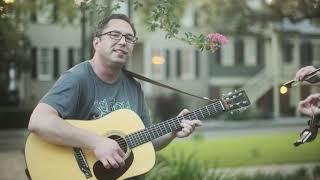Saint Anne's Reel
Signup for Vi Wickam's Fiddle Tune a Day: http://www.vithefiddler.com
When I think of Saint Anne's Reel, the first person I think of is Tony Rothrock. Tony is a great Guitarist, Mandolinist, and instrument repair guy in southwest Indiana. Tony founded the Indiana State Picking and Fiddling Championships, which I had the opportunity to run with for a few years as well. Tony really is one of the most kind-hearted people you will ever meet. Anyway, Tony really likes this tune and does a great job playing it.
I'm playing it here with the clan that hang out at Mulligan's Pub in Fort Collins for an Irish Session every Wednesday night. Jim is playing the Bohdran. He didn't make it into my video introduction because he showed up just as we were about to play the tune.
More about Vi Wickam
Website: http://www.vithefiddler.com
Facebook: http://www.facebook.com/vithefiddler
Twitter: http://www.twitter.com/vithefiddler
Saint Anne's Reel According to the Fiddler's Companion
ST(E). ANNE'S REEL. AKA -- "St. Agathe." AKA and see "La Reel de la Baie Ste. Anne." Canadian (originally), American, Irish; Reel and Breakdown. Canada; Québec, New Brunswick, Prince Edward Island, Cape Breton. D Major. Standard tuning (fiddle). AB (Reiner & Anick, Silberberg): AABB (Begin, Brody, Cranford/Holland, Jarman, Mallinson, Martin & Hughes, Miller & Perron, O'Neill, Perlman, Sweet, Taylor): AA'BB' (Phillips). According to Anne Lederman (in her article on "Fiddling" in theEncyclopedia of Music in Canada, 1992), tune was first recorded by Québec fiddler Joseph Allard as "Reel de Ste Anne"—which became popular in English-speaking Canada as "St. Anne's Reel." While this is not proof that "St. Anne's" origins are French-Canadian (as Allard spend much of his youth in upper New England, where he played in fiddle contests, and presumably came into contact with regional musicians), it is suggestive. There are at least two bays by this name in eastern Canada, as the French alternate title above would suggest, though it is not known if those features explain the origin of the tune's title. There is a French community called Baie Sainte Anne, on St. Anne's Bay, near the mouth of Mirimichi Bay, New Bruswick. "St. Anne's" was popularised by Radio and TV fiddler Don Messer (who had the title as "Sainte Agathe" in his 1948 Way Down East collection), and has been assimilated into several North American and British Isles traditions and remains a popular staple of fiddlers' jam sessions. When asked to play a Canadian tune, for example, American fiddlers generally will play "St. Anne's" first. It was in the repertoire of Cyril Stinnett, who epitomized the "North Missouri Hornpipe Style" of Mid-West fiddling, though it soon became a popular staple of most Missouri fiddlers. It was perhaps from listening to Canadian radio broadcasts in the hey-day of the big AM band stations, which could be heard clearly in the northern part of the state, or it may have been brought back by contest fiddlers in the 1960's who attended the renowned contests in Weiser, Idaho, and in Canada. Perlman (1996) similarly states the tune entered Prince Edward Island tradition from radio broadcasts from Québec, but that it has elaborated (especially in western PEI) over the years to suit the rhythms of the local step-dancing. Irish musicians have frequently recorded the melody as well. The earliest printing of "St. Anne's" appears to be in the Jarman collections of the 1930's and 1940's, where arrangement is credited to John Burt with a copyright date of 1937. Mark Wilson says its popularity in the United States dates from the 1950's after it was recorded by Nashville fiddlers such as Tommy Jackson. The tune has some affinity to older reels, including two printed by O'Neill in his Waifs & Strays of Gaelic Melody, "The Factory Lass" (249) and "The Home Made Reel" (250). There is a similarity in the first part to "The Skylark [1]," composed by James Morrison.





